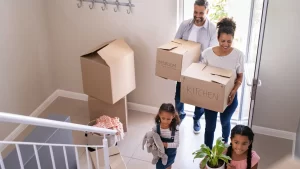If you’re a homeowner in Bentonville or the surrounding Northwest Arkansas area, you’ve likely experienced the frustration of pests showing up inside your home without warning. Whether it’s ants in your kitchen, spiders in your closet, or mice in the attic, the question is always the same: how did they get in?
Understanding how pests typically enter homes in Bentonville is essential for prevention. With the region’s humid summers, clay-based soil, and rapid housing development, pests have plenty of reasons to seek shelter indoors and plenty of entry points to do it.
Here’s a breakdown of the most common ways pests get inside homes in Bentonville and what you can do to stop them.
Why Pest Entry Is a Big Deal in Bentonville
Bentonville has grown rapidly in recent years. New subdivisions, construction zones, and wooded areas being cleared for homes mean that pests are frequently displaced and looking for a new habitat. Your home offers everything they need: food, moisture, shelter, and stable temperatures.
The clay-heavy soil in much of Benton County also contributes to issues like foundation cracks, which are prime entry points for small insects and rodents. Combine that with seasonal weather changes and you have ideal conditions for year-round pest pressure.
Common Entry Points for Pests
1. Cracks in the Foundation
Tiny cracks in your home’s foundation or concrete slab are among the most common entryways for ants, spiders, and even termites. Over time, moisture causes concrete to shift or settle, creating narrow access points that go unnoticed.
What to do
Inspect the exterior of your foundation regularly and seal any visible cracks with waterproof caulk or hydraulic cement.
2. Gaps Around Windows and Doors
Improperly sealed windows and worn-out weather stripping are open invitations for pests. Even a small gap under a door can allow insects like cockroaches or crickets to slip through.
What to do
Replace old weather stripping, install door sweeps, and check window frames for gaps. Use caulk or foam sealant to fill in any holes around the trim.
3. Utility Line and Pipe Openings
Plumbing pipes, HVAC lines, and cable or internet wires that pass through exterior walls often leave behind small gaps. These become tunnels for rodents, ants, and spiders to enter unseen.
What to do
Use copper mesh or steel wool to fill gaps around utility lines, then seal with caulk or spray foam.
4. Attics and Roof Vents
Flying pests like wasps, stink bugs, and even bats can enter through open or poorly screened attic vents, gable ends, or soffit gaps.
What to do
Install or repair vent screens and check rooflines for loose shingles or fascia boards that could create access points.
5. Garage Doors
Many homeowners in Bentonville leave garage doors partially open or use them frequently throughout the day. This gives pests a chance to wander in, especially in spring and fall when they’re looking for shelter.
What to do
Keep garage doors closed when not in use, and seal the bottom seal if light is visible underneath when the door is closed.
6. Dryer Vents and Exhaust Fans
Vents connected to your dryer, stove, or bathroom fan are often overlooked. These exit points can be large enough for rodents or insects to use as highways into your home.
What to do
Install vent covers that allow air to pass but keep pests out. Clean vents regularly to prevent buildup that might attract insects.
7. Unscreened Windows or Damaged Screens
Mosquitoes, flies, and other flying insects love to enter through unscreened or torn windows. Even a tiny tear in a screen can be enough for smaller pests like gnats to get inside.
What to do
Inspect all window and door screens at the start of each season and replace any that are damaged.
8. Basement Window Wells and Crawl Spaces
These lower parts of your home tend to stay damp and dark, ideal for pests like silverfish, centipedes, and earwigs. If the window well or crawlspace vent isn’t properly covered, pests can find an easy way inside.
What to do
Install covers over basement window wells and crawl space vents. Use a moisture barrier if you have an exposed dirt crawl space.
Final Tips for Keeping Pests Out
- Keep mulch and vegetation at least 12 inches away from your foundation
- Seal outdoor garbage bins and compost tightly
- Store pet food indoors or in sealed containers
- Schedule seasonal pest inspections to catch issues early
Final Thoughts
Pests in Bentonville don’t need much space to enter your home. Just a gap the size of a pencil is enough for a mouse, and a crack the width of a credit card can invite ants. By identifying and sealing these common access points, you can significantly reduce your risk of infestation.
Need a professional inspection of your home’s vulnerable areas? Contact Rid-a-Pest for a thorough exterior evaluation and a customized protection plan tailored to Northwest Arkansas homes.



